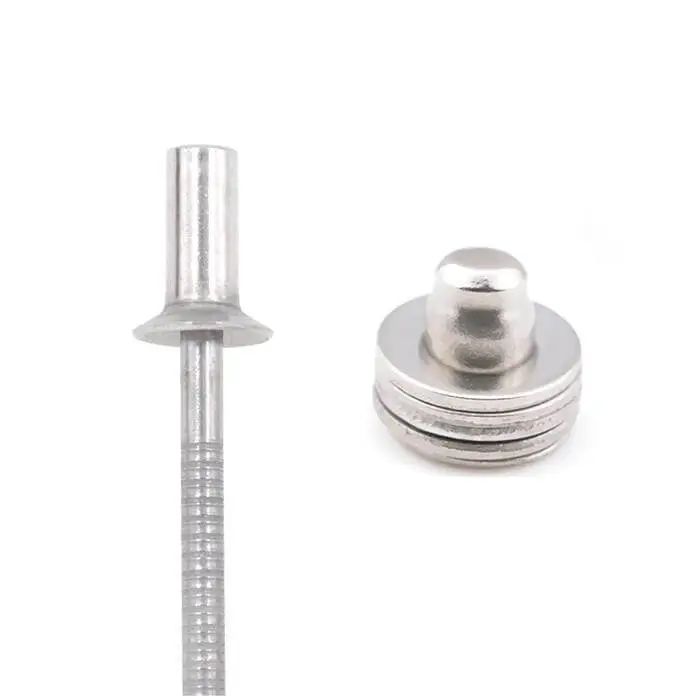Waterproof Rivet - Are Rivets Waterproof ?
Table of Contents
Are Rivets Waterproof? Although rivets are renowned for their high strength and stability, in practical applications, long-term erosion by moisture, dampness or salt spray often leads to structural loosening or corrosion leakage. Especially in scenarios such as ships, car chassis, and photovoltaic brackets that are exposed outdoors for a long time, waterproof performance becomes the decisive factor for the reliability of the fastening system.
This article will analyze for you: Which rivets have a waterproof structure? Why do ordinary rivets leak water? And how to choose the true Waterproof Rivet .
Are rivets naturally waterproof?
Rivet connections are essentially mechanical clamping structures. This structure creates a fixing force by expanding and deforming the rivet body between the plates. Common blind rivets rely on breaking the rivet mandrel to lock the tail end, while solid rivets are connected by forging the end. However, neither is designed as a closed system.
Due to drilling, tolerance fits, and the structural characteristics of the rivet mandrel channel itself, ordinary rivet connection points often have small gaps or thermal expansion and contraction gaps, making them highly susceptible to water ingress under conditions of rain, high humidity, or wind pressure.
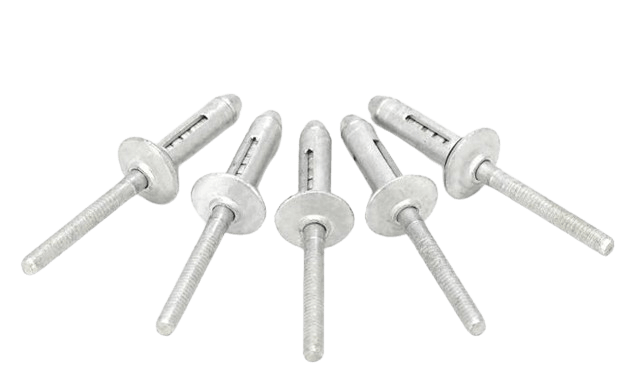
As a result, most rivets do not inherently possess watertight properties and require additional sealing with gaskets or structural adhesives. When selecting rivets, if waterproofing is required, you should choose rivets that are specifically designed for waterproofing. There should be no default that all rivets are waterproof.
What are Waterproof Rivets?
Waterproof rivets are a type of fastener designed with structural optimization or integrated sealing materials to enhance the water resistance of connection joints. They do not refer to “absolute sealing” that completely prevents water ingress. Instead, they are functional rivets that effectively prevent rainwater, splashing water, or condensation from entering connection gaps under normal application loads and typical environmental conditions.
Traditional rivets (such as open type blind rivets or solid rivets) are essentially structural connection elements that do not consider waterproofing requirements. In contrast, waterproof rivets incorporate the concept of “sealing pathways” from the design stage, addressing issues such as gaps, vapor pathways, and installation errors through technical solutions.


Types of Waterproof Blind Rivets
The structural feature of closed-end blind rivets is that the rivet tail end is closed, preventing the rivet core from breaking through the hole. Compared to standard pop rivets, when the rivet mandrel breaks, it is sealed at the blind hole end and no longer serves as a channel for moisture penetration.
The waterproofing principle of this rivet is as follows:
- The closed tail effectively prevents water from seeping into the nail core channel.
- When installed, the tight hole diameter fits snugly against the board surface, achieving a medium level of splash resistance or low-pressure waterproofing.
Applicable scenarios:
- Refrigerator cabinets, air conditioning equipment, outdoor equipment brackets.
- Situations where screws or sealants are not convenient to use.
- Single-sided operation (blind access) structure is particularly suitable.
Limitations:
- Unable to actively seal the contact area of the board surface.
- Sealing performance decreases when installation tolerances are large or the hole edges are deformed.
- Not recommended for underwater or high-pressure waterproof scenarios.
Waterproof Bulb Tite Blind Rivets feature a pre-installed rubber gasket (made of EPDM, silicone, NBR, etc.) beneath the rivet head. During installation, compressing the gasket creates a malleable sealing area on the surface of the sheet material.
Waterproofing principle:
- Prevents moisture from entering through the interface between the rivet head and the panel surface.
- High adaptability, capable of accommodating minor installation errors and thermal expansion/contraction changes.
- The gasket material exhibits UV resistance, hydrolysis resistance, and salt spray resistance.
Applicable scenarios:
- Communication equipment housings, outdoor lighting fixtures, street lights, billboards.
- Suitable for low-frequency maintenance environments or structures where sealants are not suitable.
Limitations:
- Gaskets are prone to deformation due to high temperatures or aging, and their waterproof performance declines over time.
- Insufficient compression or overpressure of gaskets may affect sealing reliability.
- The cost is slightly higher than that of ordinary rivets, and there are requirements for assembly consistency.
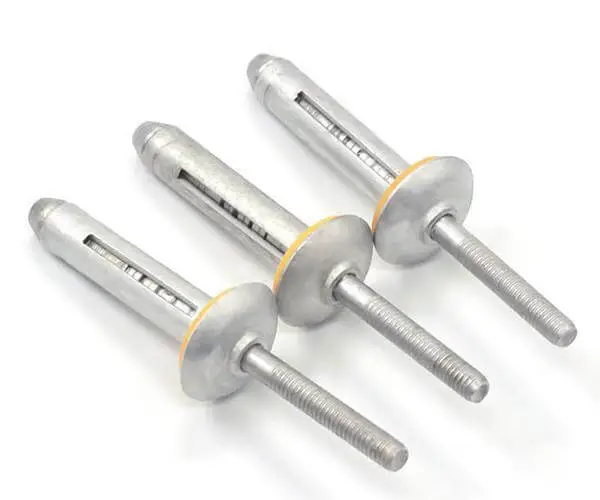
c. Structural Sealed Rivet
There are two main types of rivets: Monobolt and Interlock. They feature a lock core locking mechanism and mechanical locking function to form a seal.
Waterproofing principle:
- High clamping force is formed during installation to fill gaps.
- The specially designed lock core head/cap seals the nail core channel.
- Some products integrate composite washers or double-layer head structures.
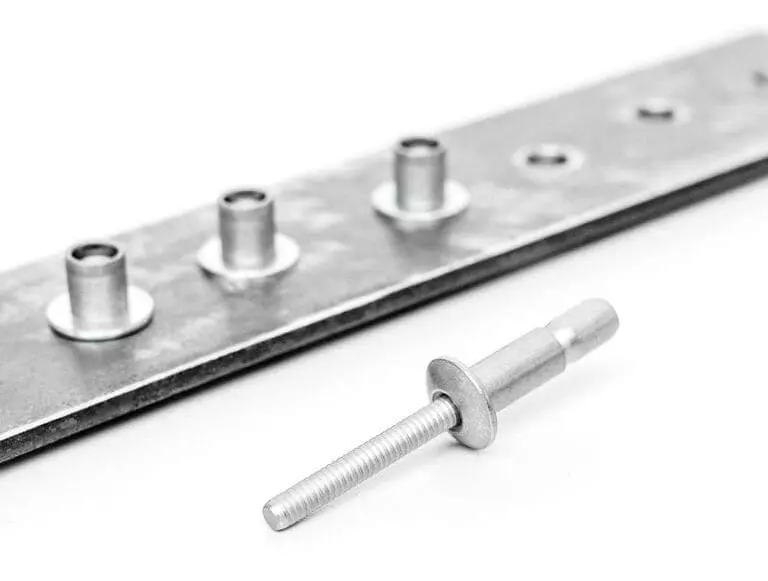
Applicable scenarios:
- Car body structure, ship body repair, highly corrosive environments.
- Electrical enclosed shells, anti-vibration/anti-impact environments that require both strength and waterproofing.
Limitations:
- High cost, installation requires special tools.
- Strict control of hole diameter tolerance and clamping thickness is required.
- Not recommended for use in thin-plate light-load structures, as it may cause material rupture or bulging.
Standard Rivets Vs. Waterproof Rivets: Performance Comparison
| Feature | Standard Blind Rivet | Closed-End Rivet | Sealed Rivet with Washer | Structural Sealed Rivet |
|---|---|---|---|---|
| Waterproof Capability | ✘ (Not waterproof) | ● Partial (sealed stem) | ✔ Yes (surface sealing) | ✔ High (multi-point sealing) |
| Head-to-Material Seal | ✘ None | ✘ None | ✔ EPDM/Silicone washer | ✔ Locked core + pressure seal |
| Core Channel Sealing | ✘ Open channel | ✔ Closed tip design | ✘ Open channel | ✔ Locked or blocked stem |
| Tensile / Shear Strength | Medium | Medium | Medium | High |
| Corrosion Resistance | Depends on material | Moderate | Good (if washer is UV stable) | Excellent (sealed + metal options) |
| Tooling Requirement | Standard rivet gun | Standard rivet gun | Standard rivet gun | May require heavy-duty tools |
| Cost Level | Low | Medium | Medium to High | High |
| Typical Applications | General assembly, enclosures | Refrigeration, HVAC panels | Outdoor housings, electrical boxes | Automotive, marine, industrial |
4 decisive factors for the waterproof performance of rivets
Whether rivets have stable watertight connection performance in actual assembly structures does not depend entirely on whether they are called “waterproof rivets.” Rather, it is determined by a series of structural and process factors.
Is the rivet structure designed to close the rivet core channel?
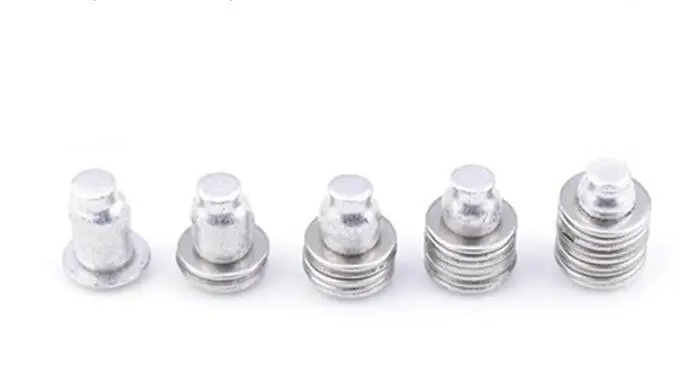
The core weakness of pop rivets lies in the rivet core channel. After the rivet core breaks, a continuous hollow path remains, allowing moisture to enter the connection area through the rivet core hole. Closed-end pop rivets structurally seal the tail channel, effectively blocking moisture pathways and significantly enhancing the rivet body’s waterproofing capability. Without a closed design, even with proper surface treatment, achieving a watertight connection remains challenging.
Whether to use sealing gaskets or structural adhesives for auxiliary sealing
There is a tolerance gap between the rivet head and the sheet metal. Even if the rivet body is sealed, water may still enter if the contact surface is not sealed. Common solutions include:
- Pre-installing EPDM rubber gaskets or silicone gaskets below the rivet head, which are compressed during the riveting process to form a flexible seal.
- Using specialized structural sealant or PU waterproof adhesive to seal the joint area before and after riveting, thereby enhancing overall waterproofing performance.
The performance characteristics of these auxiliary materials (temperature resistance, UV resistance, hydrolytic stability) directly impact the stability and durability of the structural waterproofing capability.
Installation torque and plate hole precision control
Even when using high-performance waterproof rivets, poor installation precision may lead to the risk of leakage. Typical risks include:
- Over-drilled holes or burrs at the hole edges, resulting in uneven rivet clamping.
- Deformed, warped, or improperly aligned plates, causing the sealing gasket to not be fully compressed.
- Insufficient installation force (due to manual rivet gun fatigue or inadequate pneumatic equipment settings), resulting in incomplete expansion of the rivet shank and disruption of the sealing path.
Therefore, it is recommended that waterproof connection structures prioritize automated or high-consistency clamping force assembly tools and implement a process review mechanism to confirm clamping quality.
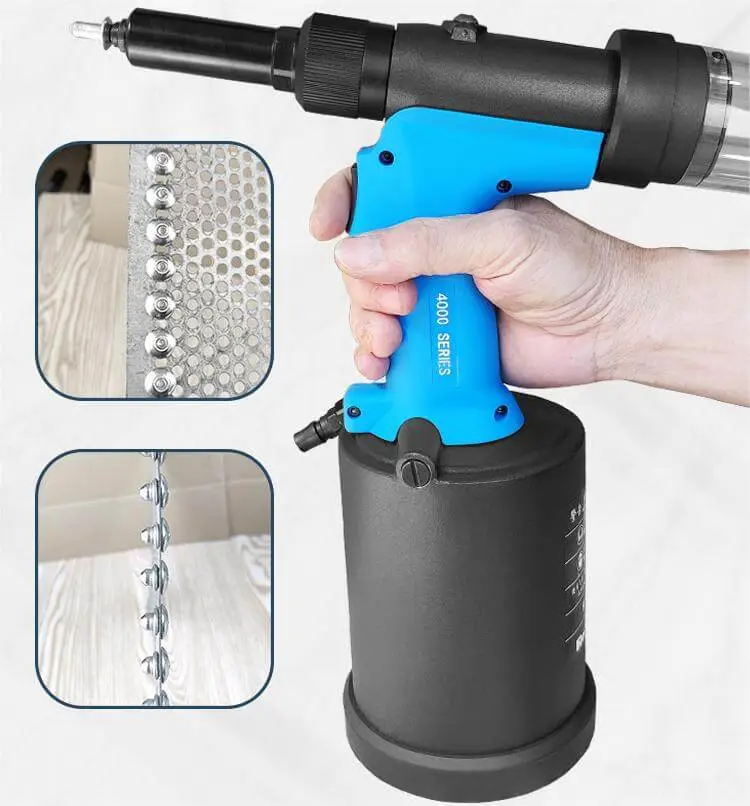
How to determine whether a rivet is truly “waterproof”?
To determine whether a rivet truly possesses “waterproof” performance, a comprehensive assessment must be conducted based on its structural characteristics, sealing design, and manufacturing certification. It should not be judged solely based on the product name or appearance. The following are several key criteria for evaluation:
① observe whether the rear end of the rivet is a closed structure—closed-type pop rivets can block the rivet core channel, preventing moisture from penetrating through.
② check if it has a rubber seal ring, such as EPDM or silicone material, to seal the gap between the rivet head and the contact surface of the sheet material.
③ confirm if the product has passed third-party waterproof testing certification (such as IP67 rating) or if the manufacturer provides a waterproof performance report.
④ the waterproof effectiveness must be verified in conjunction with installation quality and matching operating conditions. It is recommended to conduct sample testing or on-site sealing tests in critical structures.
FAQs about Waterproof Rivets
Q1: Are all closed rivets waterproof?
A: Closed rivets have a structural advantage in that they seal the rivet core channel, which significantly improves waterproofing. However, if the installation hole is too large, the clamping force is insufficient, or the plate is deformed, there may still be a risk of leakage. It is recommended to use sealing gaskets or sealants to ensure complete sealing of the joint area.
Q2: Can pop rivets be made waterproof by applying adhesive afterward?
A: It can improve the seal to a certain extent, especially between the rivet head and the sheet metal. However, it is important to ensure the integrity, durability, and consistency of the adhesive layer, and it cannot seal the rivet core channel. It is recommended as an auxiliary measure only, not as the primary waterproofing method.
Q3: Can waterproof rivets be used long-term in coastal areas and high-salt environments?
A: They can be used, but stainless steel or aluminum corrosion-resistant rivets must be selected, and they must be paired with salt spray-resistant sealing gaskets (such as EPDM or fluorine rubber). In addition, the sealing condition should be checked regularly for signs of aging. For highly corrosive areas, it is recommended to use structurally sealed rivets or additional waterproof protective layers.
Q4: Are waterproof rivets suitable for use in high-pressure water environments (such as water tanks)?
A: Not recommended. Most waterproof rivets are suitable for use in medium- to low-pressure environments, such as splash-proof, rainwater, and humid conditions. In high-pressure underwater environments, even the smallest gaps can become leakage pathways. If water pressure resistance is required, it is recommended to use welding, flange sealing, or threaded sealing structures instead.
Seal Every Connection with Rivmate Waterproof Rivets
Not all rivets are waterproof. Standard Open-End Rivet rivets are prone to micro-leakage in long-term damp and hot environments. The Waterproof Rivet/Sealed Rivet achieves true airtight and water-tight connection through a closed tail design and a mandle-locking structure. Only by choosing the appropriate material (such as stainless steel or anodized aluminum) and the correct installation method can the long-term stability of the structure be ensured in environments with rain, salt spray and vibration.

Rivmate offers a full range of waterproof sealing rivet solutions, including stainless steel, anodized aluminum and coated steel materials, which have passed the ASTM B117 salt spray test and the IPX7 waterproof rating certification.
Contact us immediately to learn how to select the most reliable Rivet Fastening System for your project and ensure that every connection point can stand the test of time and environment.
Reference

How to Rivet Metal to Wood?
How to Rivet Metal to Woo

What Is Riveting in Metal Work?
What Is Riveting in Metal
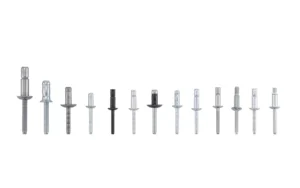
What Metal Are Rivets Made Of
What Metal Are Rivets Mad
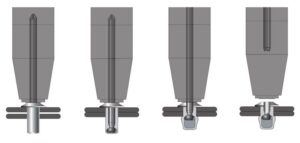
How to Rivet Metal to Metal
How to Rivet Metal to Met





